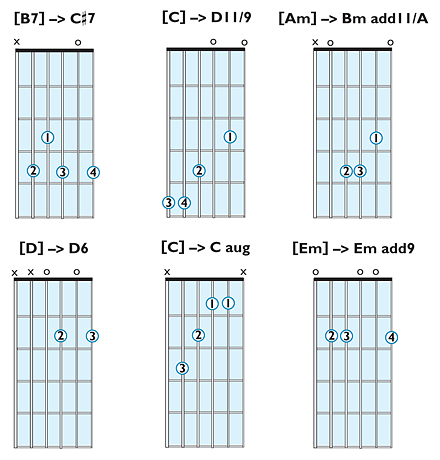A good way to force a chord progression to take an unexpected turn is to mess with a familiar open chord either by moving it up or down a fret (see the Am, B7, C shapes) or by lifting a finger off or putting one on (see the C+, Emadd9, D6, which originate as C, Em and D).
Here are some examples of chord shapes that belie their familiar looks with some unorthodox sounds…

Want all the hottest music and gear news, reviews, deals, features and more, direct to your inbox? Sign up here.
Guitarist is the longest established UK guitar magazine, offering gear reviews, artist interviews, techniques lessons and loads more, in print, on tablet and on smartphones
Digital: http://bit.ly/GuitaristiOS
If you love guitars, you'll love Guitarist. Find us in print, on Newsstand for iPad, iPhone and other digital readers


